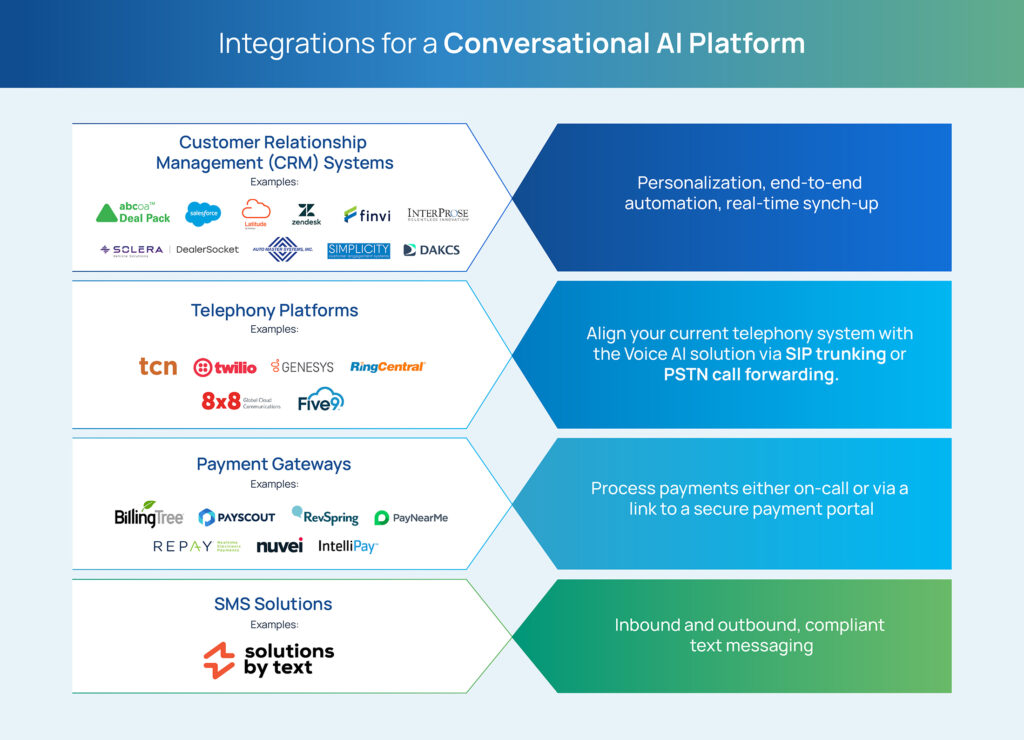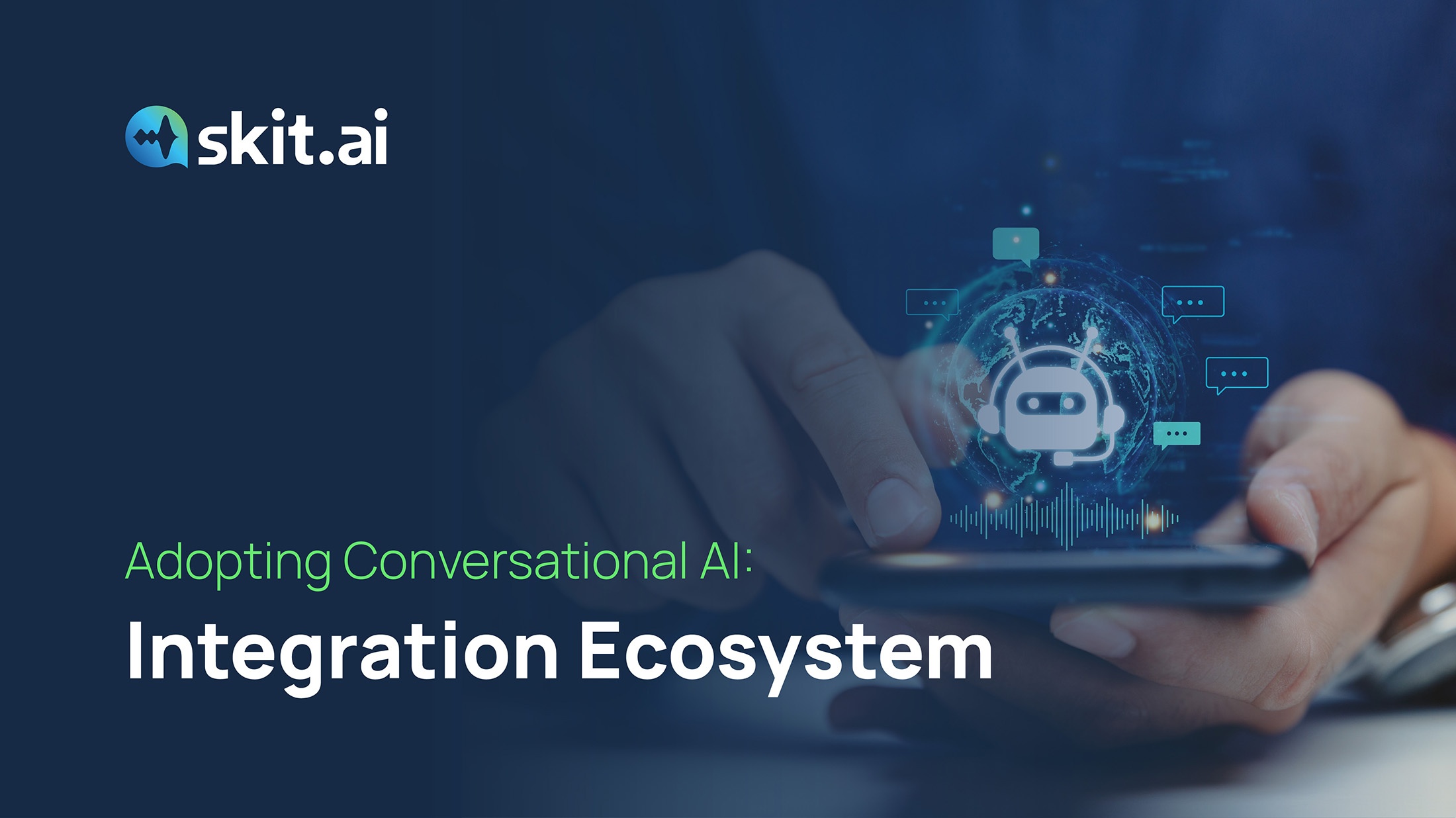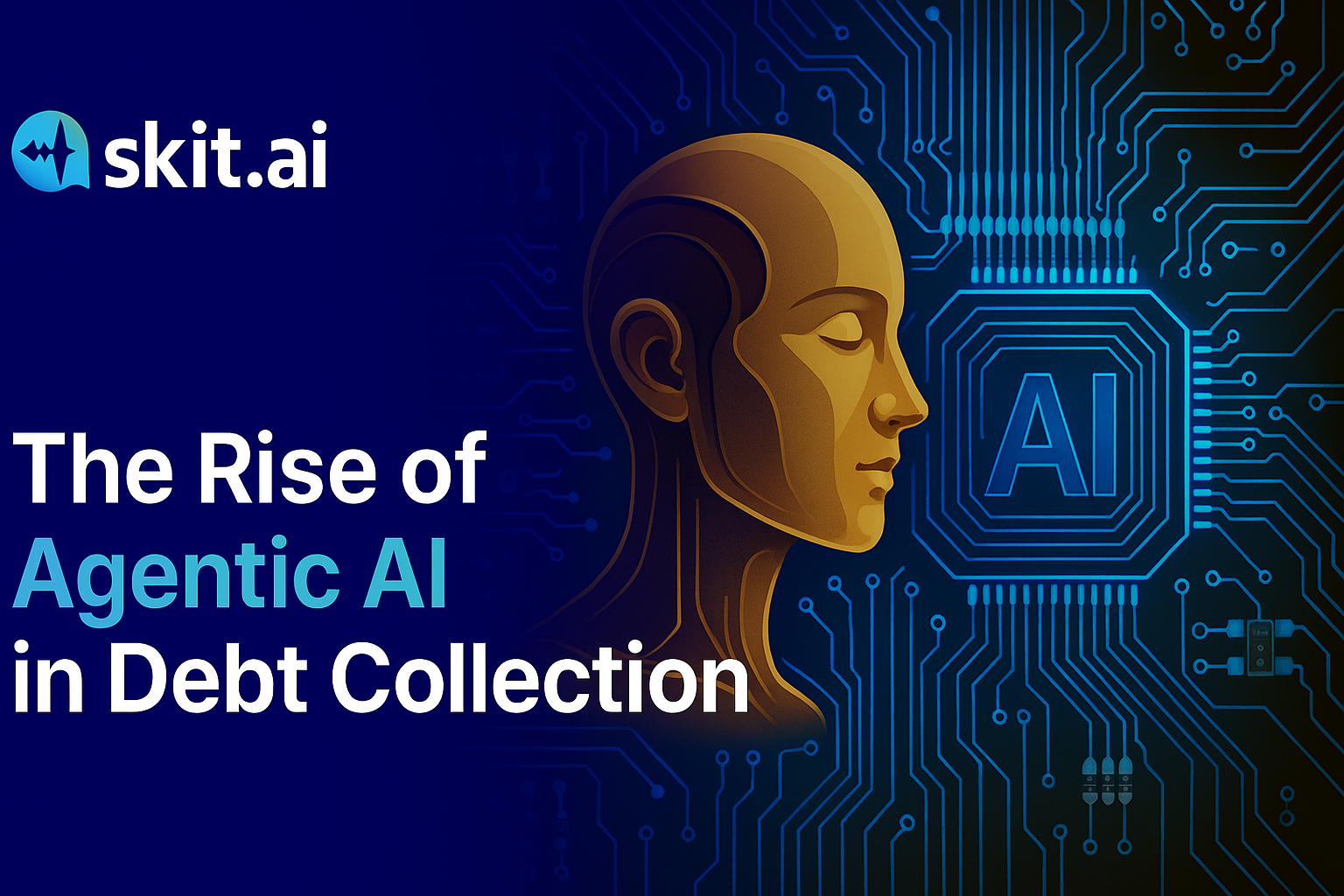You are ready to adopt a Conversational AI or Voice AI solution for your contact center, or you are in the process of adopting one—congratulations! Now is the time to think about integrations. In this article, we’ll discuss the benefits of integrating your Conversational AI platform with various tools and applications to transform your tech stack into an ecosystem, and we’ll offer some guidance on where to get started.
What Are Conversational AI Integrations?
Integrations are the systems and processes that connect the Conversational AI platform or software with other tools or applications you may be already using, so they can work together seamlessly. Integrations enable you to view, exchange, and control data from multiple sources; they augment your system’s capabilities, ensuring a more unified and efficient workflow, and enabling the automation of work that would otherwise have to be done manually.
There are different ways to build an integration—for example, via APIs or through RPA.

Integration with internal systems is the top criterion considered when selecting a Conversational AI platform provider, according to research by Gartner.
The most common types of integrations for Conversational AI are required for customer relationship management (CRM) systems, payment gateways, telephony platforms, speech analytics tools, and messaging tools. In this article, we’ll explain the role and importance of integrations and go over the most common types for various use cases.
What Are the Benefits of Integrating a Conversational AI Platform with Other Tools and Applications?
For a seamless collaboration between live agents and voicebots or chatbots, your business requires various tools that perform different functions while working well together. Through integration between tools, the entire process can be as smooth and efficient as possible.
The main benefits of integrating your Conversational AI platform with other tools and applications are:
- Ensuring a better customer experience, as the virtual agent will be able to perform multiple tasks and better serve the user or consumer.
- Maximizing the personalization of each interaction, as the virtual agent will be able to address users by name, easily access their records, and base its interactions on context.
- Automating several tasks, freeing the contact center’s staff of the administrative burden.
- Generating automated metrics and real-time analytics to track the performance of the calls and maintaining records of all consumer interactions.
3 Things To Consider When Thinking About Conversational AI Integrations
Stay lean at first. The number-one tip for companies adopting a Conversational AI solution is to avoid focusing too much on integrations at the beginning of the adoption process. This is because when you adopt a new technology, it’s important you focus on gaining experience with it and fully understanding how it can benefit your business before you invest a lot of time and money in integrating it with several other tools and platforms. First, implement the solution with the most necessary integrations, and then you can start investing in the heavier ones.
Flat-file transfers. Since integrations can be resource intensive, at first you might prefer to rely on flat-file transfers to execute your campaigns with the Conversational AI solution. Flat-file transfers via a Secure File Transfer Protocol (SFTP) are easy to execute and enable you to start using the solution immediately.
Data privacy. Data privacy and data protection are elements that you should always keep in mind when integrating different systems. You want to secure the data against unauthorized access, adopting processes like encryption, secure communications protocols, and relevant security policies.
The Most Important Integrations for a Conversational AI Platform

Conversational AI Integration with Customer Relationship Management (CRM) Systems
Companies use CRM software to gather, organize, and manage customer information. The primary benefit of integrating your Conversational AI solution with your CRM system is to easily personalize all calls, whether outbound or inbound, and automate them end-to-end.
For outbound calls, for example, the virtual agent can gather the customer’s information from the CRM and address them by name: “Hi John, this is a virtual agent calling from…” The CRM also feeds the AI solution more detailed information and context on the customer’s account and history based on the use case.
For a debt collection agency, for example, the virtual agent can gather information about the consumer’s debt and the outstanding balance.
Examples of CRM systems are HubSpot, Salesforce, Zoho, Finvi, InterProse, Latitude, Simplicity, Freshdesk, and Zendesk.
To avoid API setup, you can integrate your CRM via robotic process automation (RPA). You can learn more about robotic process automation (RPA) in our dedicated blog post.
Conversational AI Integration with Telephony Platforms
Every company with a contact center operation has a telephony system. Examples of telephony systems include TCN, LiveVox, Twilio, Genesys, RingCentral, 8×8, and Five9. Integration of the Conversational AI platform with your existing telephony system is essential and can be accomplished with two different methods.
The first is SIP trunking, a method for making and receiving phone calls and other types of communication over the Internet. This is typically the preferred method to handle AI-powered calls, but some telephony systems may not be compatible with it.
The other one is PSTN call forwarding, i.e. the public switched telephone network, an advanced network of telephone lines, switching centers, and cable systems to enable connectivity between phone devices. This solution is less flexible than SIP trunking and presents several limitations, but it can be faster to implement. Some businesses may start with PSTN call forwarding and later upgrade to SIP trunking.
Conversational AI Integration with Payment Gateways
Integrating the voicebot platform with payment gateways or payment applications improves the customer experience and ensures the completion of various transactions during the call without the need to involve a human agent. Examples of payment gateways are Payscount, RevSpring, PayNearMe, Nuvei, and IntelliPay.
Consumers can easily pay a bill either on-call or via a link to a secure payment gateway.
For debt collection use cases, this integration can be very useful, as the AI solution can assist users in making payments. This integration makes the collection process fully automated, cheaper, and smoother.
Conversational AI Integration with Messaging Platforms and SMS Solutions
To provide an omnichannel solution that allows consumers to interact with your company through their preferred channel, you’ll need to integrate the Conversational AI platform with an SMS solution. This enables the AI solution to handle inbound and outbound interactions via text message in a compliant manner.
Messaging integrations can be used both for inbound and outbound messages.
Outbound messaging:
- Payment reminders. The solution can send text messages to remind consumers of due balances and upcoming deadlines.
- Confirmations and receipts. After a consumer has made a payment, the solution can send a payment confirmation and receipt via email or text message. Confirmations can also be sent for any other type of transaction or request, such as a travel reservation change or a callback request.
- Payment link. The company can send a link to a secure online payment portal via text message (SMS) or email so the consumer can complete the payment.
Inbound messaging:
- Consumers who prefer to interact with your company via text message will be able to exchange messages with the SMS bot and receive responses in real-time.
Are you interested in learning more about how Conversational AI can benefit your business? Book a demo with one of our experts.











